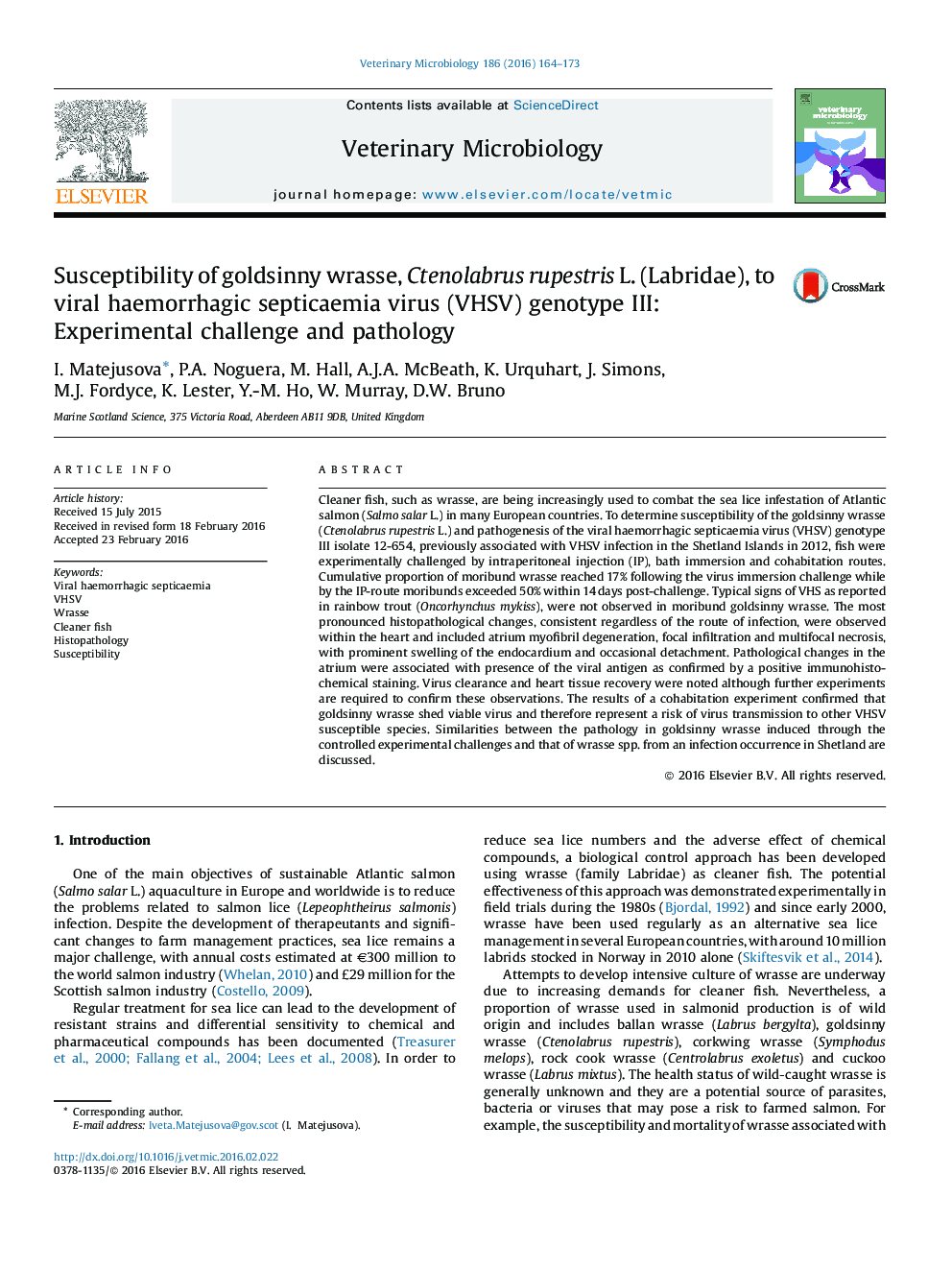| Article ID | Journal | Published Year | Pages | File Type |
|---|---|---|---|---|
| 5799712 | Veterinary Microbiology | 2016 | 10 Pages |
â¢Goldsinny wrasse is susceptible to VHSV genotype III (12-654).â¢Cumulative mortality of 17% was recorded in goldsinny wrasse infected with the 12-654.â¢No VHS disease signs as reported for rainbow trout were observed in goldsinny wrasse.â¢Necrosis and swelling of atrium endocardium was observed in the VHSV infected wrasse.â¢Goldsinny wrasse showed a potential to transmit VHSV to other naïve susceptible fish.
Cleaner fish, such as wrasse, are being increasingly used to combat the sea lice infestation of Atlantic salmon (Salmo salar L.) in many European countries. To determine susceptibility of the goldsinny wrasse (Ctenolabrus rupestris L.) and pathogenesis of the viral haemorrhagic septicaemia virus (VHSV) genotype III isolate 12-654, previously associated with VHSV infection in the Shetland Islands in 2012, fish were experimentally challenged by intraperitoneal injection (IP), bath immersion and cohabitation routes. Cumulative proportion of moribund wrasse reached 17% following the virus immersion challenge while by the IP-route moribunds exceeded 50% within 14Â days post-challenge. Typical signs of VHS as reported in rainbow trout (Oncorhynchus mykiss), were not observed in moribund goldsinny wrasse. The most pronounced histopathological changes, consistent regardless of the route of infection, were observed within the heart and included atrium myofibril degeneration, focal infiltration and multifocal necrosis, with prominent swelling of the endocardium and occasional detachment. Pathological changes in the atrium were associated with presence of the viral antigen as confirmed by a positive immunohistochemical staining. Virus clearance and heart tissue recovery were noted although further experiments are required to confirm these observations. The results of a cohabitation experiment confirmed that goldsinny wrasse shed viable virus and therefore represent a risk of virus transmission to other VHSV susceptible species. Similarities between the pathology in goldsinny wrasse induced through the controlled experimental challenges and that of wrasse spp. from an infection occurrence in Shetland are discussed.
